by Brian Duffy
1. The keeping of sacred space by assembling altars and performing rituals has been a part of the human experience since the beginning of the human experience.
The practice of magic is the primordial lifeblood of all human pursuits, the common ancestor of culture, science, art, religion, and civilization itself. The extended consequences of the original archaic mysticisms are still unfolding through every major social, cultural and economic force of the modern world.
Although most mystical concepts have been reduced to either religious institutionalization or delusional superstition, there is a living, nameless contemporary mysticism that is being carried out in uncountable subtle ways in every home, in every life.
Why do we cover mantelpieces with trinkets and heirlooms? Why do we tell ourselves that if the next Volkswagen Beetle we see is colored blue, it means a positive outcome and if it’s red, a negative outcome? Why do we still have that one toy we’ve just always held onto? Why do we arrange shells and rocks in little rows on the windowsill?
Why do we create little folded paper devices covered in numbers and symbols which can, with careful manipulation, reveal our future? Why do we keep specific polished stones in our pockets? Why do we pose our action figure collections in carefully arranged rows?
Why do we have those little tables or shelves with the buddha statues and the crystals and the candles and the incense? Where does all of this activity come from?
Spirituality is ultimately a collection of magical moments that make life worth living, the potent memories that last for decades, the peak experiences that challenge and evolve our worldviews, the shivers up our spines and liftings of our chests when we feel the tug of threads distant and unseen.
We fill small boxes in our hearts with fragile records of the precious and brief times we’ve felt connected to something larger and more complex than ourselves, the times we felt the hand of a benevolent force, heard the whispers of the Mystery.
Still, everyone, skeptic and faithful alike, has a small collection moments that defy the label of coincidence, the moments where we are left truly speechless as witnesses to the unfolding of the poetry of reality, the moments that have made our lives into beautiful works of art.
2. Any true feeling of connection with the divine is absolutely subjective, personal, and beyond words, yet we all exist together in an interconnected narrative ecosystem.
This ecosystem breathes circumstantial fire into our lives, connecting us to the world and to each other through shared perceptions, feelings and thoughts. Events occur in such a manner as to produce stories, character arcs, rises and falls in prosperity, understandings and misunderstandings, emotional dramas, conflicts and resolutions, pains and pleasures.
We learn and think and feel and work and strive and create and build.
We fall in love, we have children, we grow old, we die. These are the experiences that shape us into beings of such complexity as to earn the privilege of the sensation of being. They are gifts that we are blessedly free to make our own and act upon according to our will. This is the essence of what we call divine energy.
The rushes of experiential happenstance crash upon us with unpredictable bursts of ferocity and calm. Coincidences, opportunities, and disasters appear in the most unlikely scenarios. Our lives are constant streams of interfering inputs and outputs. There is a ceaseless imperative to choose, a constant asking of what is next, what is worth paying attention to.
The urgency to act and create, when balanced with the need to witness and receive, produces a tide that ebbs and flows. We move with this tide, we move against it, we ride the waves, we are bowled over by them. Such is the way we are swept up in the motions of divine energy.
Religions, scientific methods, cultural traditions, and other hard wired mental technologies are useful sets of principles designed to filter and integrate the flow of these experiences into our lives, giving the myriad streams of force some sense of context, meaning, or even predictability.
But as time unfolds, our strongly held convictions, derived as they may be from convincing evidence, are repeatedly challenged by new information, new experiences.
All too often do our religions compel us to refuse new information, forever stubbornly comparing present experience to ancient recorded teachings and traditions, honoring the contents of our books and rejecting the content of our lives.
Reason, logic and science pride themselves on their iterative power, their willingness to be proven wrong and to adapt to new data. However, all too often do various scientific mindsets rush to issue blanket rejections of every miraculously illogical, poetically intangible, inescapably narrative quality of the lives we actually live.
Though they cannot be contained by dogmas, nor can they be objectively verified by machine senses, magical moments continue to flow into our lives, upturning our apple carts with no effort whatsoever.
There is a middle path to coping with magical experiences, an open system that rejects pre-existing dogma, yet allows for the serious investigation of the stubbornly magnificent miracles of life that dance beyond the apprehension of the logical mind.
Rather than resting comfortably in agnosticism, a contemporary mystic dares to become a scientist of spirit.
However, this is not a quest for objective facts, nor can its evidence be bottled or tagged or embalmed on display. The plural of anecdote is not data, yet anecdotes are the true substance of our lives.
The mystic, by collecting and analyzing anecdotes of their own magical experiences, is not seeking what is true, only what is useful in contributing to their development as a powerfully awake, compassionately wise, and joyously creative human being.
3. The purpose of an independent spiritual practice is to proactively invite magical experiences into one’s life.
The key to developing an independent spiritual practices is to develop and iterate a set of tools and methods that allow one to rise to meet those magical experiences without being overwhelmed by them.
Instead, you aim to integrate those experiences into a personal system of thought technologies for the purpose of deepening ones facility in recognizing and communing with the infinite subtle patterns that lie hidden in the unfathomably complex and ineffable poetic fabric of existence itself.
How can we more effectively invite magical experiences into our lives and how do we make good use of them, make them into a source of growth and healing, make them into fuel for our gift-giving?
We can do it through mindfulness, a constant reorienting to what Terence McKenna references as “the felt presence of immediate experience,” paying full reverent attention to where we are and what we are doing without judgment and without reaching or grasping.
We can see the lives we live as dreams, longer and with slightly more consistency, yet made of the same primary substance.
We can leave open the possibility that no event is insignificant, that every moment contains a miniature reflection of the entirety of space and time.
This is how we come to feel the brush of the divine like a gentle breeze, catching in its wake fleeting glimmers of liquid gears turning and melting just beyond our peripheral visions, hinting at a massive and unfathomable interconnectedness operating behind the scenes of our precious slivers of conscious awareness.
A magical moment can catch you off guard, in a single second tracing a lightning bolt from its endpoint at the back of your head all the way to its centerless primordial beginning as a single immaculate thunderclap announcing the onset of all potentialities.
We can also invite magic into our lives through ritual, a set or sets of actions whose deliberate repetition at specific and significant intervals act as small signposts and crude maps that trace the contours of vastly larger and more intricately detailed territories of time and space. A ritual is an apprehendable microcosm of an inscrutable macrocosm.
A year is too massive to hold entirely in ones head, yet a calendar can be held in the hand. Calendars and our following of them is a kind of ritual. We invoke and reflect the entire presence of a massive, unbounded natural cycle by capturing its fractal echo in a compacted series of markings and symbols.
A truly effective magical ritual is a way of speaking in the language of life itself, recognizing words and literal symbols as crude approximations.
Engaging in ritual is practicing the careful use of a syntax-less communication made of deliberate actions employing sounds, adornments, talismans, breath, movement, fire, organic material, and other meaning-charged forms of compressed spacetime. By assembling any number of these with specific intention to produce a desired effect, a ritual is performed.
The performed ritual acts as an experiential mirror, whose kinetically ethereal surface is capable of catching brief blinding reflections of entire natural systems, sweeping vistas of existentially charged landscapes, visible only to the participants. Meaningful symbols emerge spontaneously in the process, revealing tiny objects or fleeting gestures as highly potent signifiers of massive intangible forces.
A ritual is at its most useful when it shifts our awareness into a dreamlike state, revealing the magic in the mundane, revealing the fire of the candle to be the same fire that burns in the center of the Sun.
4. Rituals, when performed with sincerity and dedication, can reliably produce magical experiences for their instigators and participants.
The motivation behind a proper ritual is not to make a display of effect that is capable of proving a paranormal truth to an observing skeptic. The desire of the magician is to produce the feeling in the moment that something magical is happening, to uncover the amorphous, cataclysmic meeting point between the world, the will, and the imagination.
Sometimes, feeling as if you might have magic powers is just as good as having magic powers.
Those who are successful in both business and art advise the beginner to “fake it until you make it”. It is only through pretending that you are doing magic that you are capable of doing magic.
While performing a magical ritual might produce a desired effect such as the banishing of ones personal demons, the elevation of one’s creative power, the healing of one’s emotional wounds, or the deepening of one’s self-understanding, it is prudent to avoid the temptation to assume a point of completion and arrival.
Magic, like water, or life itself, is always in flux between liquid, solid and gas.
The liquid form of magic is the flowing rivers of turbulent change, experimentation, action and reaction, cause and effect.
The solid form of magic is an icy cathedral of proven methods, universal archetypes, and deep lineages. The gaseous form of magic is an unbounded swirling mist, the all-pervading life force revealed as equally distributed in all things, undifferentiated and ungraspable.
All spiritual sensibilities move through this cycle, and just as one cannot sit in their hardened church forever, one cannot dissolve into ecstatic delirium forever.
Creating sacred space or constructing altars can be thought of as the building of laboratories and workbenches for maintaining the study and practice of ritual. The altar, with its many arranged sentimental objects, acts as a living mirror for our lives.
Each object, when engaged with our intentions and intuitions, can be charged with symbolic power. An altar’s contents can grow and shift to the point at which their presence and arrangement allude to both highly universal symbols of widely shared concepts and highly personal symbols of intimately kept secrets.
The altar becomes a kind of liminal switchboard, allowing us to build imaginary circuits that connect the dots between the inner and outer worlds. As the spiritually charged objects are added, taken away, and rearranged, unseen patterns are revealed, and the lines between the contents of the self and the contents of the world are blurred.
Many people build and maintain sacred space without recognizing it as such, naturally and uncritically arranging sentimental objects on mantelpieces, in glass cabinets, or any space that “needs a little life”.
We return from a camping trip with an interesting rock or a beautifully gnarled stick, placing it lovingly on a windowsill. We have a shelf in our bedrooms that is arranged with keepsake items and mementos from our early lives, heirlooms from relatives, symbols of achievement.
Collections large and small of ephemera enter our lives, and if we manage to avoid becoming insatiable hoarders, we find ourselves with a modest number of objects that are objectively worthless, yet subjectively priceless.
Although many of us find ourselves accumulating objects charged with symbolic power, comparatively few of us make the leap to deliberately christening and intentionally utilizing this set of items as an “altar” or an otherwise designated “sacred space”.
Having made this leap, we excitedly place our buddha statues, our shells and our medallions onto a specific piece of furniture in some sort of aesthetically pleasing arrangement. Feeling spiritually “turned on” by the experience, we develop a fascination with the inexplicable compulsion that has led us to this point, and the excitingly mysterious possibilities that sacred space could hold.
5. An offering is a form of ritual one can perform as a way of engaging directly with an altar.
Offerings can take any form, or involve any substance either physical or mental so long as there is something that is “used up” or otherwise metabolized from potential energy into kinetic energy.
An altar is little more than a decoration if it is left alone. A truly useful altar is a place where activity must occur. The power of expending a resource in service of sacred space is exemplified by the incredibly ancient practice of burning candles or incense.
Both of these tools are entire worlds of subtle magic unto themselves, but the potent quality they share is the simple elegance of their consumability, their expiration.
Not only do the successive expirations of incense and candles act as a convenient imperative to return to the sacred space to remove and replace the expired items, they act as powerful metaphors for our own transitory nature.
A stick of incense or a single candle is much like a day, or a year, or a lifetime. It is a discrete capsule of energy that, when prompted by a transitory spark, projects said energy outward into the world until there is nothing left.
We find peace and contemplation with candles and incense because they are like us. They arrive into their defining essence as seemingly constant and inexhaustible sources of activity, and then they slowly run down and die.
While consumables act as an active existential metaphor and a kinetic instigator to sustained interaction with sacred space, the more permanent items of an altar are the building blocks of a more passive yet no less relevant symbolic bedrock upon which to construct a map of associated ideas, feelings, memories, archetypes, and other foundational resources for the deliberate cultivation of a living spiritual sentiment and an effective magical practice.
Sometimes these objects have hard-coded cultural symbolism, such as religious icons. Others can be much more ambiguous and personal. Some altars devote themselves to natural forms of plants, seeds, crystals, rocks, feathers and shells.
Some altars devote themselves to cultural forms of medallions, statues, carved idols, plastic toys, coins, bottle caps, trinkets of worked glass, metal or wood. Most altars contain a mixture of both.
6. Once an altar is assembled with objects of significance, and candles or incense or other kinds of consumables are collected at the ready, the magical work can begin.
All that is necessary at the beginning is to sit in front of your altar for some length of time while the consumable is being consumed. A simple breath meditation is one of the most powerful form of spiritual practice, and the keeping of an altar can be thought of simply as an aid to the practice of meditation.
It is through sitting and relaxing, breathing and gazing at ones altar for an extended length of time that every other useful action or thought reveals itself.
When engaging with ones altar, it is prudent to act with equal parts seriousness and playfulness.
To effectively experiment and develop meditations and rituals and other magical systems, one must be willing to set aside their rational mind and trust their intuition. Some of the most profound altar experiences can be had from simply sitting comfortably, gazing gently at the altar and playing around with different ways to breathe.
While breath technique instructions from books and audio files can be very useful, the best breath techniques are the ones we discover ourselves.
A genuine meditative curiosity asks “What if I breathe like this?” again and again, maintaining a sustained focus and intimacy with the act of breathing, yet trusting the body to hone in on whatever sort of breath is most useful in the moment.
The same curiosity-based approach that reveals successive depths of mindful breath meditation can reveal interesting and useful rituals to be performed. “What if I hold this in my right hand and this in my left hand. What does that mean?” “What if I light these candles in a specific order?” “What if I burn sage and swirl it around my body and the altar? How does that make me feel?”
When engaging with the objects on your altar, there will be certain actions that seem to make sense at the time, and some that seem worth repeating the next time.
These actions can be as simple or elaborate as one wishes. There is no obligation to build a consistent system, only an opportunity to build and refine a toolbox of techniques that succeed in making one feel like a wizard, feel as if one is acting in harmony with some indescribable kind of subtle power.
7. While building an altar and performing a ritual can be very exciting and fulfilling, all too often do sacred spaces soon go neglected, left to gather dust.
Attention is a kind of energy that is collected, stored and metabolized by altars and other sacred spaces.
There is some sort of feeding that takes place, and some sort of hunger that must be satisfied to avoid the risk of decay and death. Attention acts as a form of sustenance for all things, both real and imagined.
Babies die if they are not held and stroked. Gods die if we stop believing in them. Our own hopes and dreams die if they are not fed by our own attention, if they are not fueled by our faith that they could become reality. So too does sacred space decay and die if it is not engaged with.
You must interact with your altar on a regular basis if it is to become any substantial source of spiritual power or psychological insight or existential reassurance or fantastical delight or any other of the wonderful experiential fruits it can produce.
It might be helpful to liken your altar to a houseplant, and to imagine that spending time with your altar is the same as watering the soil. Even sitting in front of your altar for 5 minutes a day, or half an hour every sunday morning, or perhaps 3 hours every full moon, any of this sort of modest devotion will produce useful results.
It is also helpful to devise a regularly occurring ritual that involves taking every item off the altar, and then placing each item again in a new arrangement.
This will keep the altar fresh and alive, and reveal unexpected relationships between the different objects. The cycles of the moon are especially useful, and you may feel inspired to “refresh” your altar upon every full moon or new moon.
There are many other natural cycles that can be followed, and the altar itself can be used as a way to track these cycles.
Another technique for deepening a relationship with a sacred space is to have one or more small objects that you carry with you throughout the day, and then place in a designated spot on your altar before retiring to bed. A piece of jewelry or a small stone kept in the pocket can act as an active reminder throughout the day, much like a string tied around your finger.
When you reach one of those fleeting moments of awareness, noticing the item that connects back to your altar, you can pause briefly to remember your altar and what it represents to you.
This is a way of carrying one’s spiritual convictions throughout the day, allowing them to inject themselves into your daily affairs, rather than putting a line between your mundane life and your magical life.
8. Magical consciousness is useful to the aim of shaking oneself out of psychological ruts or maladaptive habits of seeing and thinking.
Many scholars of magical technique reference a sort of “magical consciousness” that can be entered at will. This is a kind of awareness that will develop naturally as you go deeper into your practice.
It is a shift in seeing that reveals potent metaphors in the arrangement of ones surroundings. Salvador Dali, the surrealist painter, called it the “Paranoiac Critical Method,” describing it as a “spontaneous method of irrational knowledge based on the critical and systematic objectivity of the associations and interpretations of delirious phenomena.”
This is a psychological perception that can occur often when engaging with ones altar, though it can be invoked anywhere at any time. It is a dream-vision, a permissiveness to see the world as if every scene, object or event were a living message, or perhaps, “a sign.”
Magical consciousness is how a young child sees the world, full of vitality and possibility. To relax the rational mind and allow for sudden leaps of evocative connection between seemingly unrelated or insignificant happenings is a healthy antidote to the pervasive sense of disenchantment that characterizes the postmodern, ironic, jaded rationalist-utilitarian mentality of the contemporary western mind.
To see the magic in everything is to be filled with the fire of life.
In Conclusion
There are innumerable books, teachers, methods, categories and schools of thought dedicated to the practice and understanding of magic. There are just as many conflicting opinions about the usefulness or worthiness of one method over another.
The ideas and techniques related above could be branded as Chaos Magick, a school of thought that prides itself on its mutability and lack of prescribed dogma. However, as soon as a label is used to encapsulate a branch of knowledge, there is always a danger of insularity and stagnation.
Once again, the primary concern should not be to determine what is true, only what is useful.
The only prescription is to take an active role in your relationship with the mysteries of the universe, to not take anyone else’s words over your own experiences, and to give yourself permission to declare yourself a powerful and capable practitioner of magic, an intrepid wizard charting and navigating the seas of living time and sacred space.
About the Author:
 Brian Duffy is a writer and artist based in Los Angeles. His dedication to the healing power of storytelling is expressed through his prolific work as an animation producer, creative consultant, and Tarot reader. Learn more and book a Tarot reading at www.brian-duffy.com
Brian Duffy is a writer and artist based in Los Angeles. His dedication to the healing power of storytelling is expressed through his prolific work as an animation producer, creative consultant, and Tarot reader. Learn more and book a Tarot reading at www.brian-duffy.com
featured Image – source
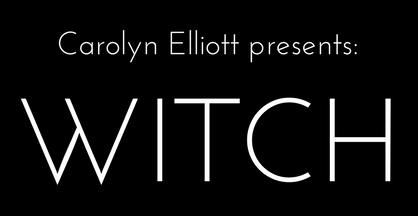

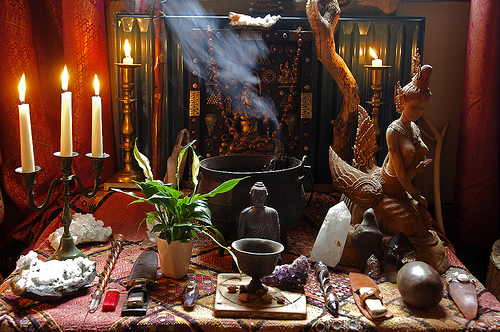

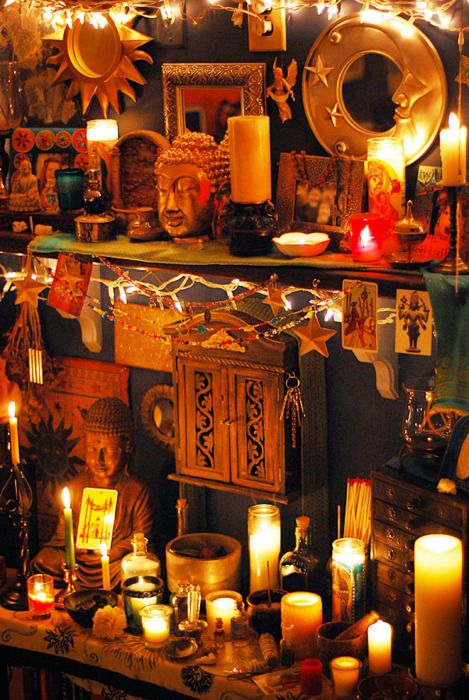

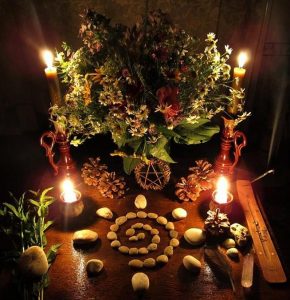



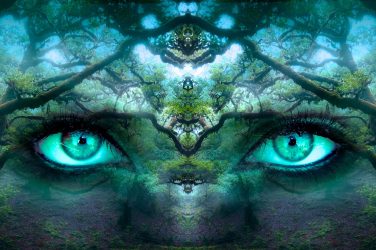

Show Comments (2)
Steve
Fuck yeah, Brian Duffy!
Been thinking about if I want an alter or not for a few months now.
Night be time.
Ian
Brian, excellent article. Very well articulated and thoughtfully rendered.